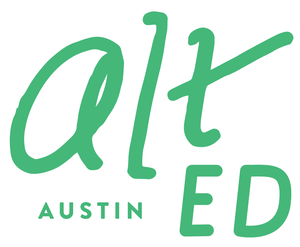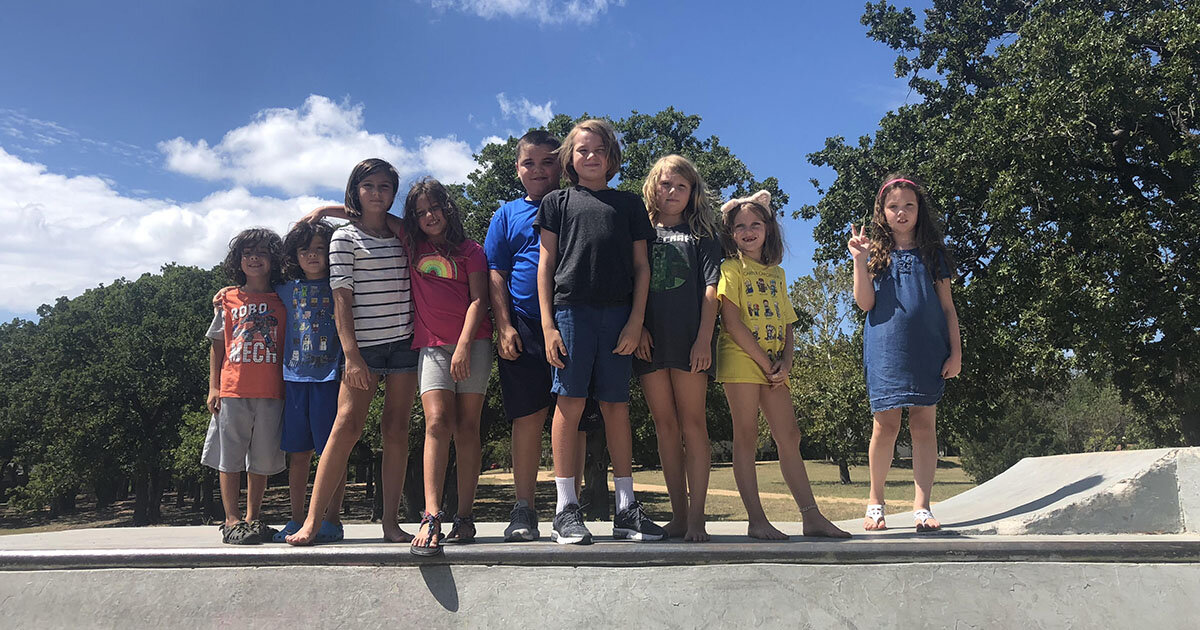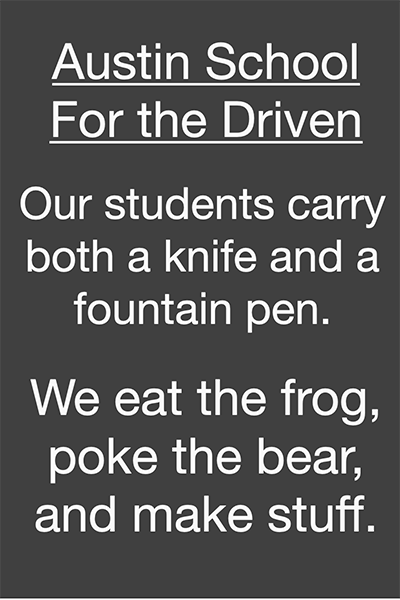Happy Birthday, Clearview!
/
Guest contributor Bruce Smith is a staff member at Austin’s Clearview Sudbury School. A former high school teacher with degrees in English, history, and education, Bruce co-founded the first Sudbury school in Illinois. He also staffed at Alpine Valley School in Colorado for fifteen years and is the founder and president of Friends of Sudbury Schooling. On the blog today he celebrates an important milestone in Clearview history.
Around here, people’s birthdays are kind of a big deal — especially when someone turns 10 (“Double digits!”). Well, when the school you brought into the world hits the same mark, that feels like a really big deal, too.
On November 9, 2009, Clearview Sudbury School opened with four students in two rooms rented from Genesis Presbyterian Church. Now, ten years later, 35 students enjoy nine rooms at the same location. That in itself speaks volumes for what we’ve learned about nurturing relationships and staying true to the Sudbury model of self-directed, democratic schooling. Thanks to our families and staff, as well as our friends at the church, we’re not only surviving but thriving.
Here are a few tidbits of what ten years have brought us:
We’re the oldest existing/longest running Sudbury school in Texas.
A total of 114 students have enrolled at Clearview, and we’ve employed ten staff members.
One of our first-year students is still here, and nine current students have been enrolled at least six years.
Tuition has gone up only $2,000 since 2009 (with minimum annual tuition now at $1,600), underscoring our commitment to making a Sudbury education as affordable as possible.
We’ve brought internationally famous writer, researcher, and self-directed education advocate Peter Gray to Austin three times. (Good links to Peter’s work include his Psychology Today blog and his book Free to Learn.)
Students and staff from more than half a dozen other Sudbury schools have visited Clearview.
Clearview staff have attended Sudbury conferences in Massachusetts, Maryland, and New York.
We’ve had five graduates in the past ten years.
To celebrate our big birthday this past November, we hosted an event with Jim Rietmulder, co-founder and staff since 1984 at The Circle School in Harrisburg, Pennsylvania, on November 15th. Please check out the YouTube videos of Jim’s talk, and consider buying a copy of his great new book, When Kids Rule the School.
Whether it’s our regular potlucks, our annual family camping trip, or just the spontaneous fun, intense interactions and deep play of daily school life, there’s always lots going on at Clearview. But don’t just take our word for it — below you’ll find the perspective of a long-time teacher and administrator who visited us last Spring.
Happy 10th Birthday, Clearview Sudbury School!
Thank you for your invitation to visit Clearview. When we spoke about the Sudbury model several weeks ago, you really piqued my interest. From the vantage point of an educator/administrator in public education for nearly 25 years, I dove into the history and researched many stories, explanations, and testimonials on this educational framework. I must admit, I found it delightful to read about how children were free to learn at their own pace and investigate based on their own interests. However, I couldn’t wait to see it in action because I truly couldn’t imagine what children would do, if left on their own, to manage their time and learning experiences.
As I visited your campus, I saw exactly what I expected to see. Some children playing video games, some climbing trees, some reading, some doing art and writing, some visiting, some on computers, and some eating. I visited with one of the children who explained to me how she felt confident about knowing how to make good choices and how to respect others. I spoke with an adult on campus who attended a Sudbury school in California. Her story intrigued me as I listened to how she was able to navigate college and make solid decisions about her future.
Perhaps the most impressive part of my visit was listening in on the Judicial Committee. This was the moment I said, “I’m impressed!” There’s a huge push in public education to bring children to a place of higher-order thinking. Many programs and methods are used. Teachers are trained in techniques and design to promote deep thinking in their classrooms. What I saw in the Judicial Committee demonstrated so much more than a scripted or contrived lesson. Children were settling their personal disputes with authentic, natural consequences with little assistance from the adults on campus. The adults that were interjecting modeled perfectly how to carefully choose words for the written record and listened respectfully to children as they decided how best to maintain order in their school. The conversations were rich, vocabulary was robust, and social skills laced with respect and reasoning skills were at an all-time high.
The result of what children are experiencing at Clearview Sudbury School tells me what I wondered as I did my homework prior to my visit. While it may seem unconventional to some, it seems so natural to the children on campus. No one is testing to see if everyone is on track. Everyone feels supported. Best of all, these children have not been robbed of their curiosity by years of sitting in rows completing worksheets. I loved it!
I was pleasantly surprised to see what I saw at Clearview Sudbury School. Thank you for broadening my horizons!! Can’t wait to see what the future holds for your students and Clearview Sudbury School. Keep up the great work!!
Bruce Smith































